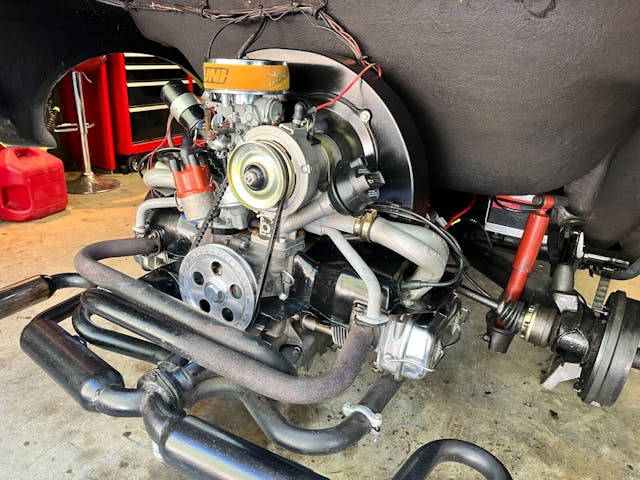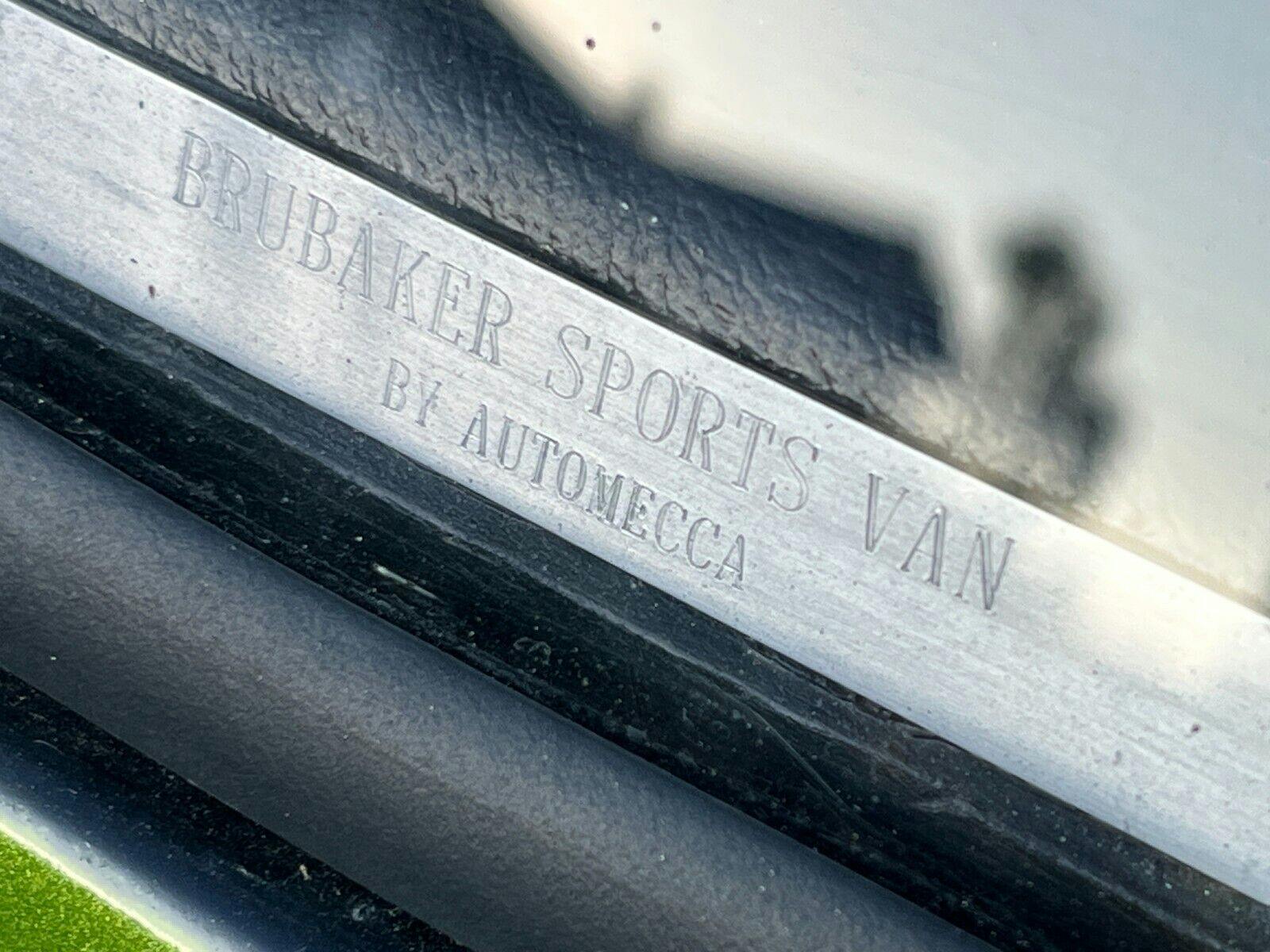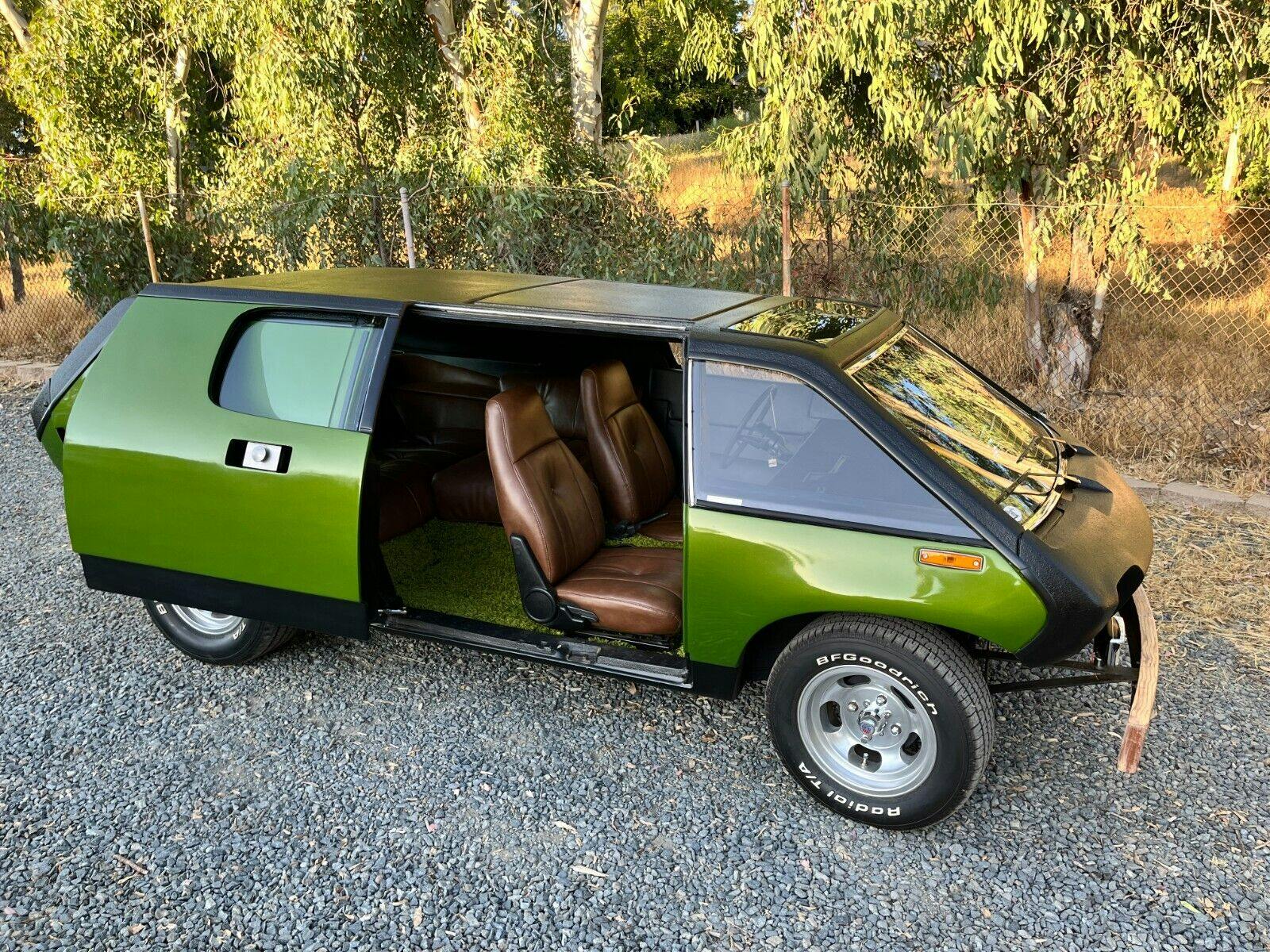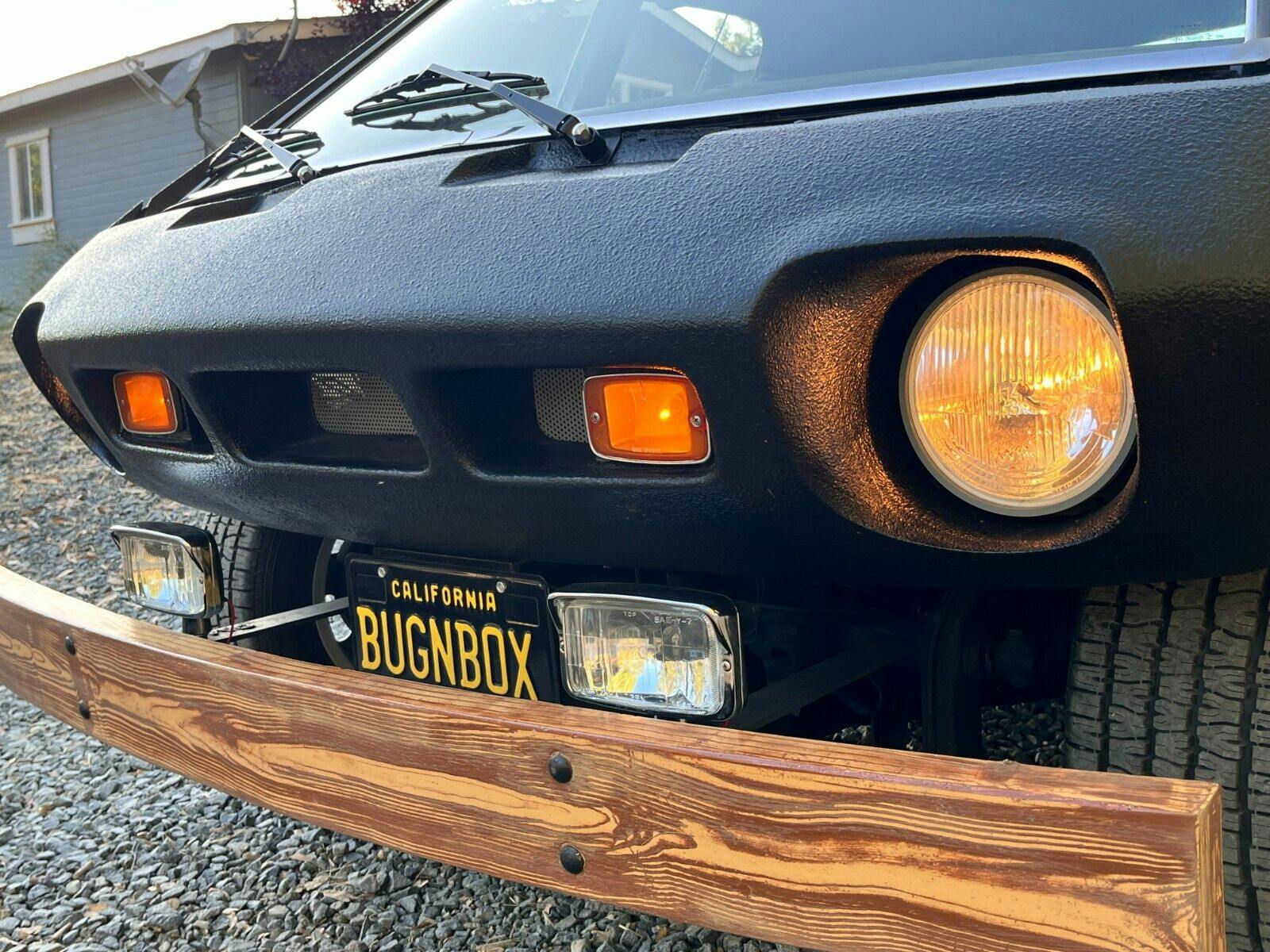Media | Articles
Rare, vintage surf van will blow your mind—and budget
The Volkswagen Beetle has long been the chassis of choice for numerous car kits and factory-produced models. You definitely know the iconic Meyers Manx dune buggy, the Bradley GT, and perhaps even the MiniHome motorhome. Keep driving down that long and winding VW road, and you’ll eventually discover the Brubaker Box.
The 1970s Bug–based “minivan” is cool, weird, practical, jaw-dropping, and rare. So when one surfaced on eBay this week, bidding quickly soared past $50,000, days before the end of the auction, which is set for Saturday, July 1 at 5 p.m. Eastern.
The bidding frenzy is noteworthy, especially because the subject of all the attention isn’t even one of the original three Brubaker Boxes; it’s one of 25 Automecca-built bodies that were offered after the original makers went bankrupt.
The story began with Californian Curtis Brubaker, who studied car styling at Pasadena’s Art Center College of Design and worked for Lear Jet and General Motors before setting up his own studio in Los Angeles. Brubaker liked the Meyers Manx, but he imagined an even better tool for surfers to get their boards, gear, and friends to the beach.
Starting with a Volkswagen Type 1 chassis and working with fellow designers Todd Gerstenberger and Harry Wykes, Brubaker penned an innovative, “one-box” van with sloping front and back glass, a removable roof, and a single sliding door on the passenger side. Why only one? The fewer doors, the more rigid the fiberglass body, which was fashioned with 13 panels mounted on a tube frame and attached to the VW floorpan. To limit overhead costs, the windshield was borrowed from an AMC Hornet, the rear glass came from a Chevrolet El Camino, and the bumpers were made of wood or a composite material made to look like wood (opinions vary).
In addition to the driver and passenger seats up front, the rear featured a stylish love seat that could be removed to add cargo space. It’s difficult to imagine a minivan this, well, mini, but the unusual-looking vehicle stood only 53 inches tall.

Car and Driver featured the Brubaker Box on the cover of its March 1972 issue, and it was so well received at the 1972 Los Angeles International Motorsports Show that Brubaker was able to score $160,000 in funding. Flush with what amounts to nearly $1.2 million today, Brubaker obtained a 17,000-square-foot space for production. He estimated that his team could build five Boxes per month at $3995 apiece ($29K). In time, he hoped to increase that number to 400 per month.
The problem, as it turned out, was that Volkswagen wasn’t impressed with the idea. The German automaker declined to sell Brubaker any Type 1 chassis, which meant he would be forced to buy new (or used) Beetles and remove the bodies. When that process proved too costly, Brubaker eventually filed for bankruptcy. With Plan A dead, he eventually sold the design to Mike Hansen’s Automecca of Chatsworth, California. Most sources agree that Automecca, which offered the vehicle as the Sports Van, built 25 in total, including this one.
The seller, oldbug.com, explains that the 1971 Brubaker Box/Automecca Sports Van (VIN 1102392016) was “discovered as a bare, sun-cooked body in the high desert of California” and underwent a year-long, full restoration. It has been painted “in its original Jungle Green Metallic with period-correct long, green shag carpet, and the interior is true to the original design and pattern in a brown vinyl.”
The Box features a chrome bare-foot gas pedal, period Kraco 8-track player, period accessory wood shift knob and controls, and “exceedingly rare” original early ’70s Empi logo instrumentation and Empi sport steering wheel with padded center.
“This is the ONLY example known to have the optional in-dash ice chest/storage box that was offered in the original sales prospect and order form,” the seller writes. “The wheels are period correct U.S. Indy four-lug slot mags, cleanly polished with chrome lugs and period key locks, with BFGoodrich raised white-letter tires on all four corners.
“The textured roof and end panels are done in the correct-style grain, and the controversial original fiberglass ‘faux wood’ bumpers are fitted front and rear. New Old Stock 1970s Sears and Roebuck driving lights were sourced and fitted up front. New windshield and rear window glass (AMC Hornet and El Camino, respectively, as the original).”
Marketplace
Buy and sell classics with confidence
Mechanically, the car is powered by a new—as opposed to rebuilt—1.6-liter dual-port engine with a new AS-41 engine case, all new internals and externals, mated to a four-speed manual transmission. The vehicle has 12 volt electrics with alternator, mechanical advance distributor, single barrel carb with electric choke, and mechanical fuel pump. The exhaust system is a period-original header set up with two tips “that exit perfectly just below the bumper.”

The chassis is from a 1971 Beetle and has IRS rear suspension, ball joint front beam, and stock drum brakes all around with new CV boots and shocks. The Brubaker Box/Automecca Sports Van has been driven fewer than 100 miles since the restoration was complete.
A collection of original documentation and literature from Brubaker and Automecca is included in the sale, but the personalized California “BUGNBOX” plates are not. Of course, if you’re in it for the plates, you’re missing the point.
“It is simply crazy to drive,” the seller writes. “From the single side door, to the driving position, the short shifter, the side-mounted switches, sliding side windows, the view across that immense dash and out the front windows, and, of course, the big wrap-around swanky love seat couch seating in the back … it is an experience like no other car in the world to go for a spin around the block in this.”
It’s also an opportunity that doesn’t come around often.
***
Check out the Hagerty Media homepage so you don’t miss a single story, or better yet, bookmark it. To get our best stories delivered right to your inbox, subscribe to our newsletters.












































That thing is cool… I don’t know if it’s 50K worth of cool, but it is cool
I had a subscription to Hot Rod magazine in the early 1970s.
They had a photo of a light colored Brubaker, I think it was at an auto show (introduction).
I thought it was very cool looking, and it was years before mini-vans hit the dealerships.
My 1st “car” was a 61 VW Microbus, but I always LOVED these!
Buuut wait – there’s more:
Mine had the same green shag carpet!
Thanks so much for sharing this. The whole restoration was shared on YouTube on the Carchaeology channel. Check it out when you get a chance!
with the bids at just over $50k, unless others jump in at the last minutes, this would be way under valued and perfect for huge short term appreciation. just imagine what this will be worth once word gets out? this auction was only 7 days long. good luck to whomever buys it.
What an absolutely, unconscionably ugly – yet strangely attractive – vehicle. I’m with TG – it’s cool, but not $50K cool – at least not to me. However, I will admit, if I had it, I’d definitely drive it. This thing must be something like an automotive elephant man: it repels me, yet I cannot look away.
I love everything about it! Bonus: it looks like a street legal Shuttlecraft.
🤣
Surf van? Where do you put the boards? No rack on top, and no room inside. And that dashboard ice chest, at the end of a long hot day at the beach it’s going to be a tub of water unless it has a drain on it. But it does look cool.
Now there’s a man who pays attention to detail – where to put the boards indeed? Best comment of the day award! 😊
The love seat is removable for cargo space per the article. But that means fewer friends along for the ride. A conundrum for sure! But really, do you buy something like this because it’s practical? Looking good has its price!
Good point. The rear seats are removable, so apparently you pull those and slide the boards inside. With that said, that lone side door might make it tough … and still doesn’t seem like enough room. I’ll be writing a follow-up story to this, so I’ll pose that question to a guy who once owned one.
Click bait is officially everywhere, didn’t expect it here though
I wondered where the boards go when reading this too. Then I thought, Hmmm – maybe that’s why it has a removable panel in the roof? Do you carry them sticking out through the roof?
I hauled a surfboard in mine recently…it was as clumsy and stupid as you could probably imagine. It fit inside fine, but you had to climb in the car first and then pull it in the door behind you, then try to slide the heavy door closed over the top of it. Getting out was equally awkward .
The Brubaker failed for many reasons , while the design was attractive and futuristic for the time, it totally sucked as a useful and comfortable automobile. Ergonomics were secondary, fit and finish was poor, visibility and ventilation were inadequate, it’s really the worst car ever to drive and live with. One of the period road test magazines of the era really ripped it apart, very funny to read.
But…that is a part of its appeal. It’s a car that seriously attracts the most amazing array of people, the design is 50 years old and still has a modern feel and it just looks so freakin cool, yet it was destined to fail.
The auction closed at $68,900 , serious money for a silly car. But as an automotive rarity and design icon, that might have been a bargain. Just don’t plan on driving it much, and leave the surfboard at home.